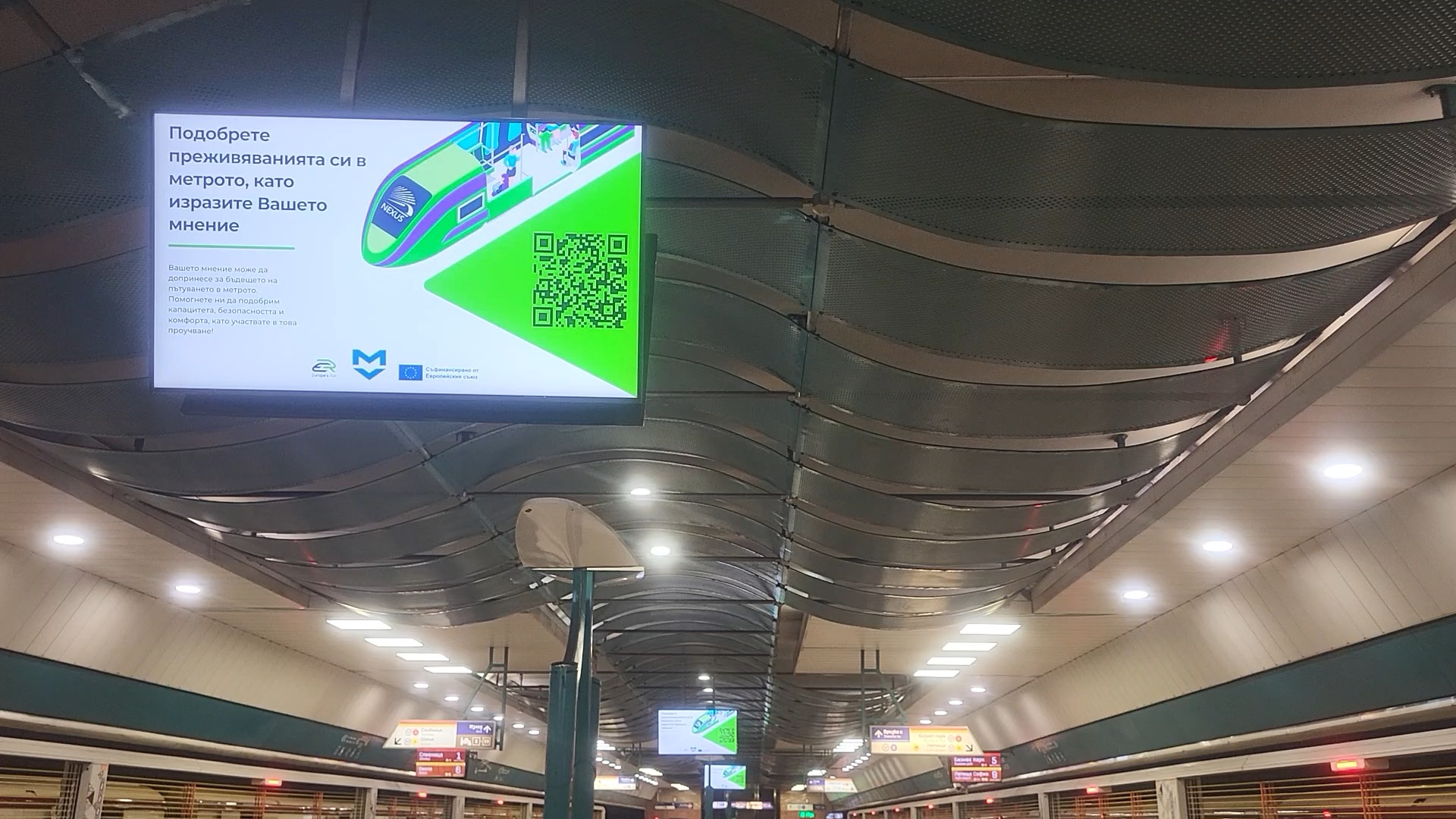The NEXUS project, funded by the European Union’s Horizon Europe programme and supported by Europe’s Rail Joint Undertaking, focuses on how metro systems can evolve to meet the demands of growing cities. It aims to develop solutions that make urban rail services safer, more efficient, and more accessible by combining automation, artificial intelligence, and improved operational practices. A key part of this initiative is gaining insight into the needs of both passengers and operators. Deliverable 3.1, User & Operator Requirements and Framework Conditions, provides this foundation. By identifying practical requirements and examining the organisational and technical frameworks that shape metro systems, the deliverable lays the groundwork for future innovations that are both feasible and publicly trusted.
The study combines data from a passenger survey of 899 respondents from cities across Europe, six expert interviews, a global operator survey with 22 metro operators; as well as a second workshop-based survey involving 10 metro operators, and insights gathered during a dedicated workshop session. Together, these insights provide a comprehensive picture of how metro systems operate today and what is needed for the future.
Passenger findings
The passenger survey and expert interviews focused on how passengers experience metro services and what would improve their journeys:
- Real-time information: Passengers want clear, context-specific information during their trips. This includes updates on service disruptions, carriage occupancy, and alternative routes. Static messages were considered insufficient, particularly during unexpected events.
- Automation: Most passengers were open to automated metro systems but expressed concerns about the lack of staff on trains in case of emergencies. Safety measures—such as platform screen doors and visible staff presence at stations—were seen as essential for building trust.
- Interior design and comfort: Passenger emphasized the importance of carriage layouts that enable clear movement and visiblity. Aisle seats are preferred by woman, vertical grab rails and leaning surfaces are favoured for standing, and open, funnel-shaped entrances support comfort and smoother passenger flow within the carriage.
- Demographic differences: Younger passengers tend to adapt more quickly to new technologies, while older passengers and passengers with disabilities place higher value on visible assistance and clear instructions.
Operator findings
The operator survey gathered input from metro networks of various sizes and levels of automation across Europe, Asia, and the Americas:
- Automation and its challenges: Many operators see automation as a way to improve service frequency and reliability. However, they also pointed to challenges such as workforce transitions, emergency response procedures, and the cost of retrofitting older systems.
- Artificial Intelligence (AI): AI is mainly used for predictive maintenance and passenger information. While operators see potential for wider use, they reported significant barriers, including data integration, privacy concerns, and the lack of standardised tools.
- Platform screen doors: These were widely recognised for their safety benefits, but operators noted the high cost of installation and maintenance, especially for older networks.
- Cybersecurity: As systems become more automated, operators are prioritising cybersecurity. Most follow international standards such as ISO 27001 and IEC 62443 to protect critical infrastructure.
- Workforce concerns: Operators acknowledged job insecurity among staff affected by automation but also noted opportunities to retrain staff for new roles in customer support and system monitoring.
Organisational structures and practices
Through the “Community of Practices” workshop and a dedicated survey conducted amount 10 metro operators, NEXUS examined how operators manage their internal processes:
- Most operators rely on hierarchical governance structures but increasingly combine central oversight with local decision-making for day-to-day operations.
- Safety management procedures are well established, with regular monitoring and alignment with local emergency protocols.
- Predictive maintenance is in its early stages, but operators that have introduced it report reductions in service disruptions.
- Energy efficiency is an emerging priority, with measures such as regenerative braking and centralised energy monitoring. However, legacy infrastructure limits the potential for immediate improvements.
- Cybersecurity is becoming a dedicated operational focus, especially for networks introducing higher levels of automation.
Key takeaways for NEXUS
Deliverable 3.1 concludes with a catalogue of functional and non-functional requirements for future metro systems. These are based on the combined input from passengers and operators and include:
- Real-time passenger information systems that support clear decision-making during travel.
- Automation strategies that address passenger concerns about safety and operator concerns about staff training and emergency procedures.
- Organisational structures that promote collaboration between departments and align with regulatory frameworks.
- Investments in cybersecurity and predictive maintenance to ensure reliable and safe operations.
- Inclusive design approaches that consider the needs of different passenger groups.
These findings will guide the next steps of the NEXUS project, helping metro operators make informed decisions about technology adoption, system design, and passenger-facing services.
Deliverable 3.1 about passenger and operator requirements will be available for download soon.
